标签:
1、MySQL基础
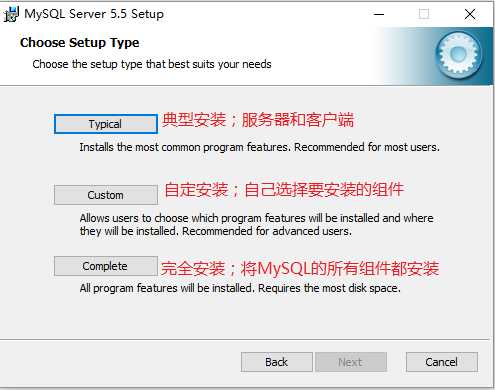
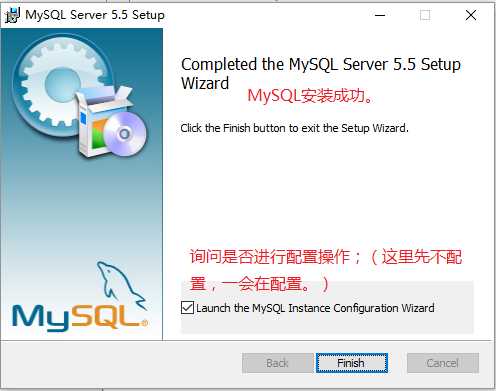
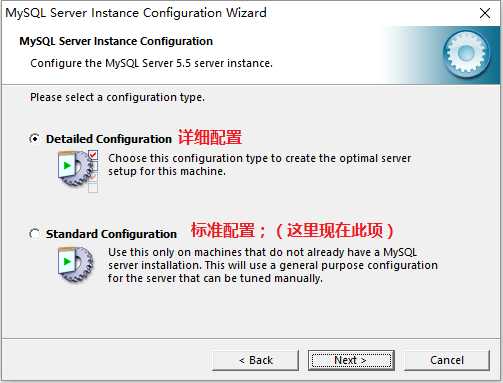
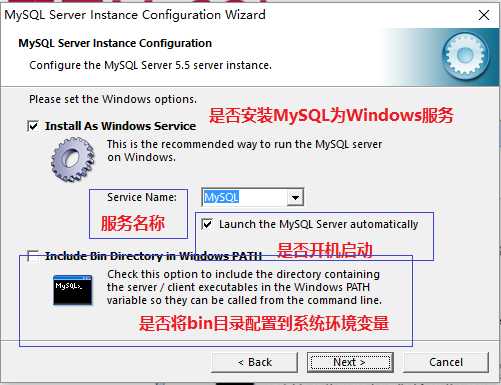
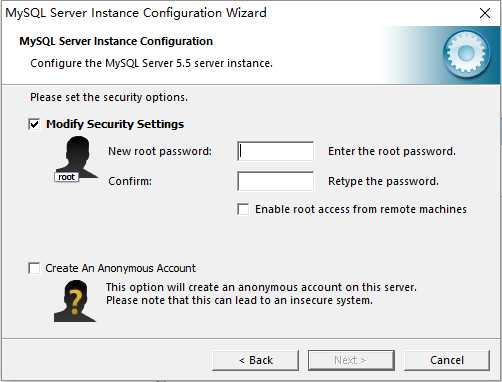
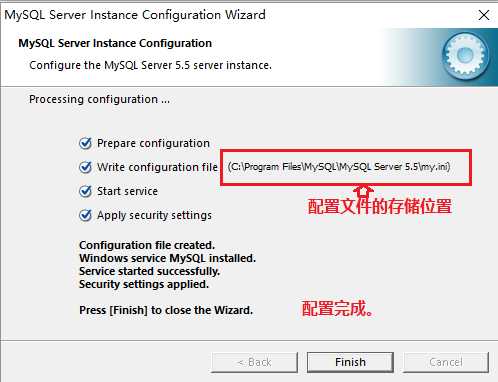
# MySQL Server Instance Configuration File# ----------------------------------------------------------------------# Generated by the MySQL Server Instance Configuration Wizard### Installation Instructions# ----------------------------------------------------------------------## On Linux you can copy this file to /etc/my.cnf to set global options,# mysql-data-dir/my.cnf to set server-specific options# (@localstatedir@ for this installation) or to# ~/.my.cnf to set user-specific options.## On Windows you should keep this file in the installation directory # of your server (e.g. C:\Program Files\MySQL\MySQL Server X.Y). To# make sure the server reads the config file use the startup option # "--defaults-file". ## To run run the server from the command line, execute this in a # command line shell, e.g.# mysqld --defaults-file="C:\Program Files\MySQL\MySQL Server X.Y\my.ini"## To install the server as a Windows service manually, execute this in a # command line shell, e.g.# mysqld --install MySQLXY --defaults-file="C:\Program Files\MySQL\MySQL Server X.Y\my.ini"## And then execute this in a command line shell to start the server, e.g.# net start MySQLXY### Guildlines for editing this file# ----------------------------------------------------------------------## In this file, you can use all long options that the program supports.# If you want to know the options a program supports, start the program# with the "--help" option.## More detailed information about the individual options can also be# found in the manual.### CLIENT SECTION# ----------------------------------------------------------------------## The following options will be read by MySQL client applications.# Note that only client applications shipped by MySQL are guaranteed# to read this section. If you want your own MySQL client program to# honor these values, you need to specify it as an option during the# MySQL client library initialization.#[client] //MySQL客户端port=3306 //MySQL的默认端口号[mysql]default-character-set=latin1 //latinl为MySQL客户端默认编码方式,将其改为utf8编码方式。# SERVER SECTION# ----------------------------------------------------------------------## The following options will be read by the MySQL Server. Make sure that# you have installed the server correctly (see above) so it reads this # file.#[mysqld] //主要用于MySQL服务器端的配置# The TCP/IP Port the MySQL Server will listen onport=3306#Path to installation directory. All paths are usually resolved relative to this.basedir="C:/Program Files/MySQL/MySQL Server 5.5/" //基础安装目录#Path to the database rootdatadir="C:/ProgramData/MySQL/MySQL Server 5.5/Data/" //数据文件存储目录# The default character set that will be used when a new schema or table is# created and no character set is definedcharacter-set-server=latin1 //latin1默认为当前服务器上所存储的编码方式;将其修改成utf8# The default storage engine that will be used when create new tables whendefault-storage-engine=INNODB# Set the SQL mode to strictsql-mode="STRICT_TRANS_TABLES,NO_AUTO_CREATE_USER,NO_ENGINE_SUBSTITUTION"# The maximum amount of concurrent sessions the MySQL server will# allow. One of these connections will be reserved for a user with# SUPER privileges to allow the administrator to login even if the# connection limit has been reached.max_connections=100# Query cache is used to cache SELECT results and later return them# without actual executing the same query once again. Having the query# cache enabled may result in significant speed improvements, if your# have a lot of identical queries and rarely changing tables. See the# "Qcache_lowmem_prunes" status variable to check if the current value# is high enough for your load.# Note: In case your tables change very often or if your queries are# textually different every time, the query cache may result in a# slowdown instead of a performance improvement.query_cache_size=0# The number of open tables for all threads. Increasing this value# increases the number of file descriptors that mysqld requires.# Therefore you have to make sure to set the amount of open files# allowed to at least 4096 in the variable "open-files-limit" in# section [mysqld_safe]table_cache=256# Maximum size for internal (in-memory) temporary tables. If a table# grows larger than this value, it is automatically converted to disk# based table This limitation is for a single table. There can be many# of them.tmp_table_size=18M# How many threads we should keep in a cache for reuse. When a client# disconnects, the client‘s threads are put in the cache if there aren‘t# more than thread_cache_size threads from before. This greatly reduces# the amount of thread creations needed if you have a lot of new# connections. (Normally this doesn‘t give a notable performance# improvement if you have a good thread implementation.)thread_cache_size=8#*** MyISAM Specific options# The maximum size of the temporary file MySQL is allowed to use while# recreating the index (during REPAIR, ALTER TABLE or LOAD DATA INFILE.# If the file-size would be bigger than this, the index will be created# through the key cache (which is slower).myisam_max_sort_file_size=100G# If the temporary file used for fast index creation would be bigger# than using the key cache by the amount specified here, then prefer the# key cache method. This is mainly used to force long character keys in# large tables to use the slower key cache method to create the index.myisam_sort_buffer_size=35M# Size of the Key Buffer, used to cache index blocks for MyISAM tables.# Do not set it larger than 30% of your available memory, as some memory# is also required by the OS to cache rows. Even if you‘re not using# MyISAM tables, you should still set it to 8-64M as it will also be# used for internal temporary disk tables.key_buffer_size=25M# Size of the buffer used for doing full table scans of MyISAM tables.# Allocated per thread, if a full scan is needed.read_buffer_size=64Kread_rnd_buffer_size=256K# This buffer is allocated when MySQL needs to rebuild the index in# REPAIR, OPTIMZE, ALTER table statements as well as in LOAD DATA INFILE# into an empty table. It is allocated per thread so be careful with# large settings.sort_buffer_size=256K#*** INNODB Specific options ***# Use this option if you have a MySQL server with InnoDB support enabled# but you do not plan to use it. This will save memory and disk space# and speed up some things.#skip-innodb# Additional memory pool that is used by InnoDB to store metadata# information. If InnoDB requires more memory for this purpose it will# start to allocate it from the OS. As this is fast enough on most# recent operating systems, you normally do not need to change this# value. SHOW INNODB STATUS will display the current amount used.innodb_additional_mem_pool_size=2M# If set to 1, InnoDB will flush (fsync) the transaction logs to the# disk at each commit, which offers full ACID behavior. If you are# willing to compromise this safety, and you are running small# transactions, you may set this to 0 or 2 to reduce disk I/O to the# logs. Value 0 means that the log is only written to the log file and# the log file flushed to disk approximately once per second. Value 2# means the log is written to the log file at each commit, but the log# file is only flushed to disk approximately once per second.innodb_flush_log_at_trx_commit=1# The size of the buffer InnoDB uses for buffering log data. As soon as# it is full, InnoDB will have to flush it to disk. As it is flushed# once per second anyway, it does not make sense to have it very large# (even with long transactions).innodb_log_buffer_size=1M# InnoDB, unlike MyISAM, uses a buffer pool to cache both indexes and# row data. The bigger you set this the less disk I/O is needed to# access data in tables. On a dedicated database server you may set this# parameter up to 80% of the machine physical memory size. Do not set it# too large, though, because competition of the physical memory may# cause paging in the operating system. Note that on 32bit systems you# might be limited to 2-3.5G of user level memory per process, so do not# set it too high.innodb_buffer_pool_size=47M# Size of each log file in a log group. You should set the combined size# of log files to about 25%-100% of your buffer pool size to avoid# unneeded buffer pool flush activity on log file overwrite. However,# note that a larger logfile size will increase the time needed for the# recovery process.innodb_log_file_size=24M# Number of threads allowed inside the InnoDB kernel. The optimal value# depends highly on the application, hardware as well as the OS# scheduler properties. A too high value may lead to thread thrashing.innodb_thread_concurrency=10#启动服务net start mysql#关闭服务net stop mysql#补充:在Windows操作系统下,所有的服务都可以通过net start/stop来启动和关闭。C:\Windows\system32>mysql -Vmysql Ver14.14Distrib5.5.49,forWin64(x86)C:\Windows\system32>mysql -uroot -p -P3306 -h127.0.0.1 //mysql -uroot -p用户密码 -P3306 -h127.0.0.1 Enter password:******Welcome to the MySQL monitor.Commands end with ; or \g.YourMySQL connection id is 1Server version:5.5.49MySQLCommunityServer(GPL)Copyright(c)2000,2016,Oracle and/or its affiliates.All rights reserved.Oracle is a registered trademark of OracleCorporation and/or itsaffiliates.Other names may be trademarks of their respectiveowners.Type‘help;‘ or ‘\h‘for help.Type‘\c‘ to clear the current input statement.mysql> exit; //退出,还可以是“quit;”和“\q;”ByeC:\Windows\system32>mysql -uroot -phadoop --prompt \hWelcome to the MySQL monitor.Commands end with ; or \g.YourMySQL connection id is 5Server version:5.5.49MySQLCommunityServer(GPL)Copyright(c)2000,2016,Oracle and/or its affiliates.All rights reserved.Oracle is a registered trademark of OracleCorporation and/or itsaffiliates.Other names may be trademarks of their respectiveowners.Type‘help;‘ or ‘\h‘for help.Type‘\c‘ to clear the current input statement.localhostprompt mysql>PROMPT set to ‘mysql>‘mysql>| 参数 | 描述 |
| \D | 完整的日期 |
| \d | 当前数据库 |
| \h | 服务器名称 |
| \u | 当前用户 |
mysql>prompt \u@\h \d> //组合来使用mysql> SELECT VERSION(); //显示当前MySQL服务器的版本+-----------+| VERSION()|+-----------+|5.5.49|+-----------+1 row inset(0.00 sec)mysql> SELECT NOW(); //显示当前日期时间+---------------------+| NOW()|+---------------------+|2016-05-1622:33:26|+---------------------+1 row inset(0.00 sec)mysql> SELECT USER(); //显示当前用户+----------------+| USER()|+----------------+| root@localhost |+----------------+1 row inset(0.00 sec)mysql> CREATE DATABASE t1; //创建数据库t1;或者:CREATE SCHEMA t1;Query OK,1 row affected (0.00 sec)mysql> SHOW DATABASES; //查看数据库+--------------------+|Database|+--------------------+| information_schema || mysql || performance_schema || t1 | //t1是新创建的数据库,其它四个是安装好MySQL后就自带的数据库。| test |+--------------------+5 rows inset(0.01 sec)mysql> CREATE DATABASE t1;ERROR 1007(HY000):Can‘t create database ‘t1‘; database existsmysql> SHOW WARNINGS;+-------+------+---------------------------------------------+| Level | Code | Message |+-------+------+---------------------------------------------+| Error | 1007 | Can‘t create database ‘t1‘; database exists |+-------+------+---------------------------------------------+1 row inset(0.00 sec)mysql> CREATE DATABASE IF NOT EXISTS t1;Query OK,1 row affected,1 warning (0.00 sec)mysql> SHOW WARNINGS; //查看警告信息+-------+------+---------------------------------------------+|Level|Code|Message|+-------+------+---------------------------------------------+|Note|1007|Can‘t create database ‘t1‘; database exists |+-------+------+---------------------------------------------+1 row in set (0.00 sec)mysql> SHOW CREATE DATABASE t1; //查看数据库的编码方式+----------+-------------------------------------------------------------+| Database | Create Database |+----------+-------------------------------------------------------------+| t1 | CREATE DATABASE `t1` /*!40100 DEFAULT CHARACTER SET utf8 */ |+----------+-------------------------------------------------------------+1 row in set (0.00 sec)mysql> CREATE DATABASE IF NOT EXISTS t2 CHARACTER SET gbk; //创建指定编码方式的数据库Query OK, 1 row affected (0.00 sec)mysql> SHOW DATABASES;+--------------------+| Database |+--------------------+| information_schema || mysql || performance_schema || t1 || t2 || test |+--------------------+6 rows in set (0.00 sec)mysql> SHOW CREATE DATABASE t2;+----------+------------------------------------------------------------+| Database | Create Database |+----------+------------------------------------------------------------+| t2 | CREATE DATABASE `t2` /*!40100 DEFAULT CHARACTER SET gbk */ |+----------+------------------------------------------------------------+1 row in set (0.00 sec)mysql> SHOW CREATE DATABASE t2;+----------+------------------------------------------------------------+|Database|CreateDatabase|+----------+------------------------------------------------------------+| t2 | CREATE DATABASE `t2`/*!40100 DEFAULT CHARACTER SET gbk */| //gbk+----------+------------------------------------------------------------+1 row inset(0.00 sec)mysql> ALTER DATABASE t2 CHARACTER SET = utf8;Query OK,1 row affected (0.00 sec)mysql> SHOW CREATE DATABASE t2;+----------+-------------------------------------------------------------+|Database|CreateDatabase|+----------+-------------------------------------------------------------+| t2 | CREATE DATABASE `t2`/*!40100 DEFAULT CHARACTER SET utf8 */| //utf8+----------+-------------------------------------------------------------+1 row inset(0.00 sec)mysql> SHOW DATABASES;+--------------------+|Database|+--------------------+| information_schema || mysql || performance_schema || t1 || t2 || test |+--------------------+6 rows inset(0.00 sec)mysql> DROP DATABASE t2;Query OK,0 rows affected (0.06 sec)mysql> SHOW DATABASES; //少了t2+--------------------+|Database|+--------------------+| information_schema || mysql || performance_schema || t1 || test |+--------------------+5 rows inset(0.00 sec)标签:
原文地址:http://www.cnblogs.com/chj0911/p/5500880.html